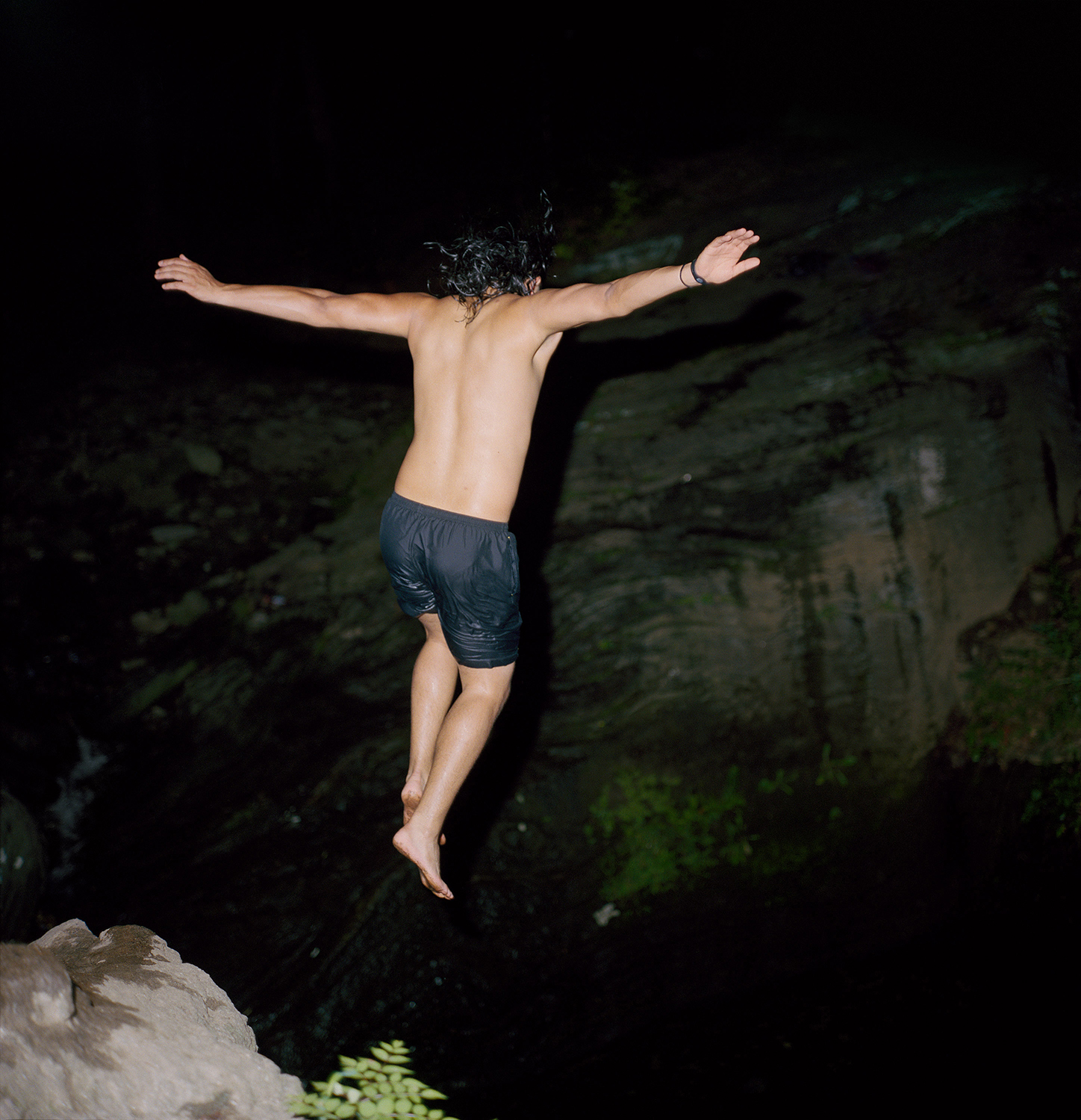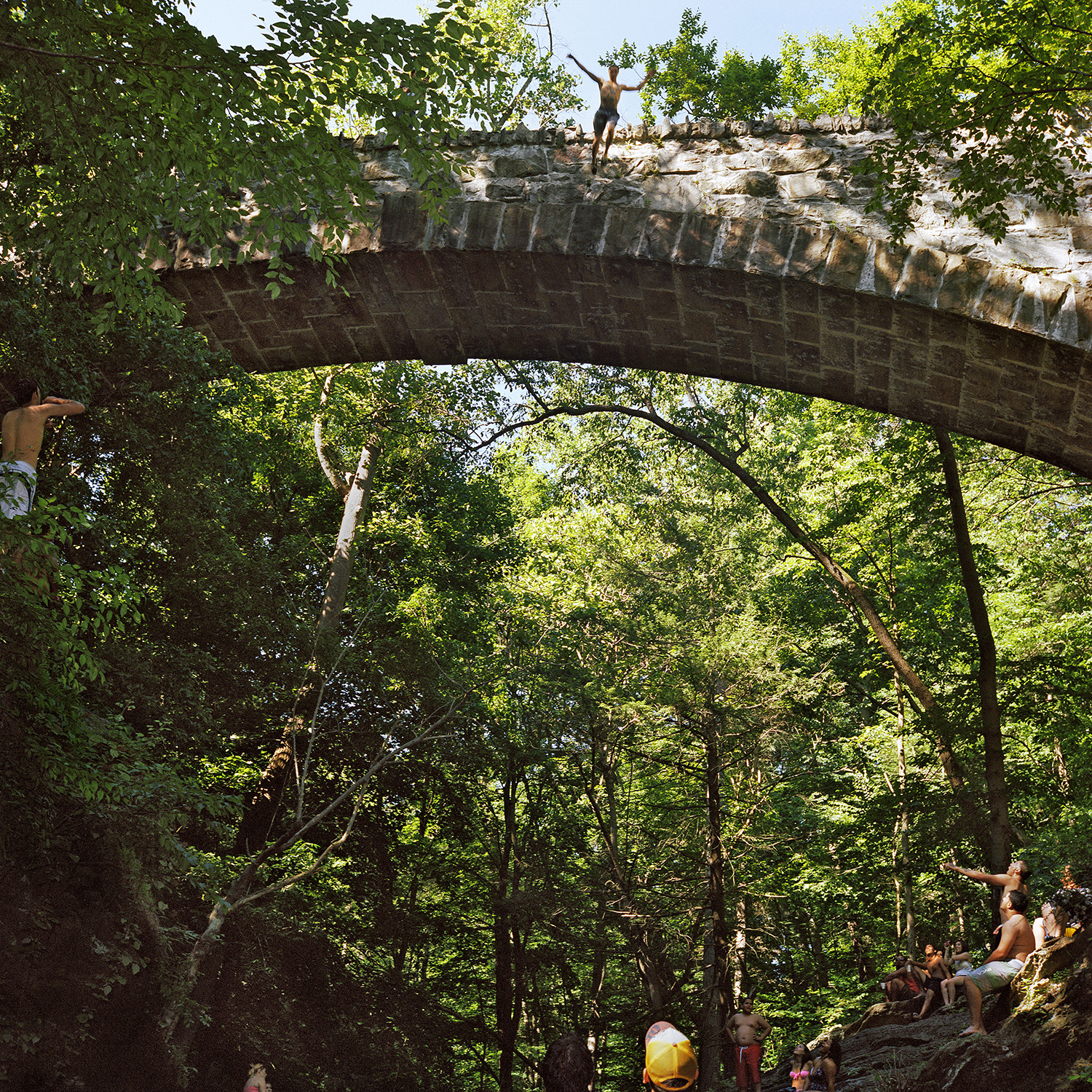Review Santa Fe: Sarah Kaufman: Devil’s Pool
Today, we are continuing to look at the work of artists with whom I met at Review Santa Fe in November 2023. Up next, we have Devil’s Pool by Sarah Kaufman.
Sarah Kaufman (b. Philadelphia, PA) holds a BA from Haverford College and an MFA from Virginia Commonwealth University. Solo exhibitions of her photography include Saint Joseph’s University, Haverford College, Bowdoin College, Notre Dame University, Soho Photo, and the Silver Eye Center. Kaufman’s projects have been reviewed and featured in ARTnews Magazine, The Philadelphia Inquirer, Visual Studies Journal, Huck Magazine, and more. She has participated in group exhibitions internationally and permanent collections include Haverford College, The Pennsylvania Convention Center, and Procreate Projects UK. Her first monograph, Devil’s Pool, was published by Daylight Books. Kaufman is an Associate Professor in Art at Ursinus College and she lives and maintains a studio in Philadelphia.
Follow Sarah on Instagram: @sarahkaufmanphoto
Devil’s Pool
Curiosity about revealing the human body in unselfconscious moments has long driven my photography and research. My recent work, Devil’s Pool, explores the body out in nature and looks at how the landscape can allow us to exist freely in our physical selves, absorbed in the experience of place. Devil’s Pool, an unsanctioned swimming hole in Philadelphia’s Fairmount Park, magnetically draws people from all over, and this work explores the complex, layered story that unfolds here.
The film photography project, spanning seven years, investigates how people relate to their environment and affirms the human need and impulse to commune with the natural world. The work pictures a diversity of human form, celebrating the body interacting with nature and recognizes traditions that follow both the landscape and bathing throughout art. The photographs highlight the value of access to green spaces within an urban setting, and a sense of discovery and revelry through connecting to nature.
Through photographing at Devil’s Pool, I began to see the landscape, both tamed and wild, as a fundamental force that fosters our potential to be fully present within ourselves and our surroundings.
Daniel George: You worked on Devil’s Pool for quite a few years. How did it all begin? What led you to the Wissahickon?
Sarah Kaufman: For me, visiting the Wissahickon was an important part of growing up in Philadelphia. It’s a park that runs through many different neighborhoods and is accessible to most of the city by bike or public transit. Parts of it feel pretty wild, like you could be far out in the woods. My Philadelphia neighborhood was fraught with lot of violence and other instabilities of city life in the 1980s/90s yet my time in the nearby Wissahickon woods allowed me to grow up feeling connected to nature in spite of all that. After being away for many years I moved back to Philadelphia for a teaching job and immediately rekindled me relationship with the Wissahickon. I hiked and photographed there for a few years before realizing that the photos I was making at a (forbidden) swimming hole, called Devil’s Pool, were the ones that truly excited my sensibilities and were beginning to resonate. Once I figured this out, I became obsessed and a long-term project began to take shape. I made work at Devil’s Pool for seven years, spending whatever time I could, immersed in the rhythms of the place and talking with the people I photographed.
I had just spent years photographing people nude in their homes, at home in their bodies. And this swimming hole, out in the woods, was providing a space for strangers to come together, strip off their clothes, and inhabit their bodies with what I saw as a similar sense of freedom. It was definitely a moment of realization–that of course, this was the spot where I needed to photograph. All kinds of people of all ages from all over Philadelphia gather at Devil’s Pool to lounge, swim, dive, and revel in their experience of being within the dramatic natural landscape.
DG: One aspect of this project that I find interesting is how it focuses on what you describe as an “impulse to commune with the natural world.” How do you feel this is manifest in your images?
SK: The more intense or immediately eye-catching images of jumping and diving often reveal a raw, visceral interaction with the landscape that holds an edge of adrenalin and danger. I am equally interested in the quieter moments of contemplation that happen at Devil’s Pool and the sensory experiences of feeling and listening to the cool water and the rhythmic splashing of jumpers in the background. I also see communion with nature manifest in the images of play and social connection that to me, appear to be fostered by a shared experience of the place. In my photos, the water, rocks, and trees affect how people hold their bodies and interact with each other. I like to imagine the spiritual potential within each of these modes of connecting with the landscape and with each other.
DG: You write that “curiosity about revealing the human body in unselfconscious moments has long driven [your] photography and research.” What brought about this interest, and has sustained it as a core element of your creative work?
SK: The previous project I mentioned led me to photograph strangers, regular people, in their homes, as I was seeking out everyday moments of relating to our bodies and spaces—everything from bathing to clipping toenails or daydreaming. I think that having a camera in my hand has allowed me to act on a desire to connect with others and find points of shared, relatable experience, across our human differences. Photographing people can be uncomfortable, a social and emotional risk for everyone involved, and I find meaning in pushing past that in collaboration with another person. I think when people allow me to photograph their bodies in “unselfconscious moments” a shared vulnerability connects us. The types of moments that I see out in the Wissahickon Park are, of course, different than within the home, but I am similarly drawn in by the vulnerability and freedom expressed through the way people physically engage with the landscape.
DG: I am also intrigued by the idea that your share, of landscape helping us “exist freely in our physical selves, absorbed in the experience of place.” Would you elaborate on this?
SK: My photos are about how I see the experience of being in the woods in the city as an antidote to some of the daily stressors of urban life. I understand the nature, giant rocks, trees, waterfall, and deep green pool, as a force that brings people together, that has called people to the place and to each other, fostering a sense of awe and connection.
DG: On the topic of feeling present within one’s surroundings, many photographers would agree that their creative practice affords them a degree of awareness that promotes a greater connection to place. Did you have this sort of experience working on Devil’s Pool? If so, what insights could you share?
SK: Having lived in cities my whole life, Philadelphia, Richmond, VA, and Brooklyn, I have always valued access to parks, community gardens, and other green spaces for people living in the urban environment. But connecting so intensely with a single location and the way that people interact with it was a new experience that became more and more intoxicating as time went on. I do feel like I know Devil’s Pool intimately, I know how the shape of a particular rock attracts people to lean on it a certain way, or that a specific trickle of water off to one side invites people to dangle their toes. When I visit Devil’s Pool in the winter, I can still feel the presence of all the layers of people I have witnessed spending time there and moving through the space in the warm months. My investment in this place has heightened my understanding that people need nature in their lives
Posts on Lenscratch may not be reproduced without the permission of the Lenscratch staff and the photographer.
Recommended
-
The Favorite Photograph You Took in 2025 Exhibition, Part 2January 1st, 2026
-
The Favorite Photography YOU Took in 2025 Exhibition, Part 3January 1st, 2026
-
The Favorite Photograph YOU Took in 2025, Part 4January 1st, 2026
-
The Favorite Photograph You Took in 2025 Exhibition, Part 5January 1st, 2026
-
The Favorite Photograph You Took in 2025, Part 6January 1st, 2026


































































